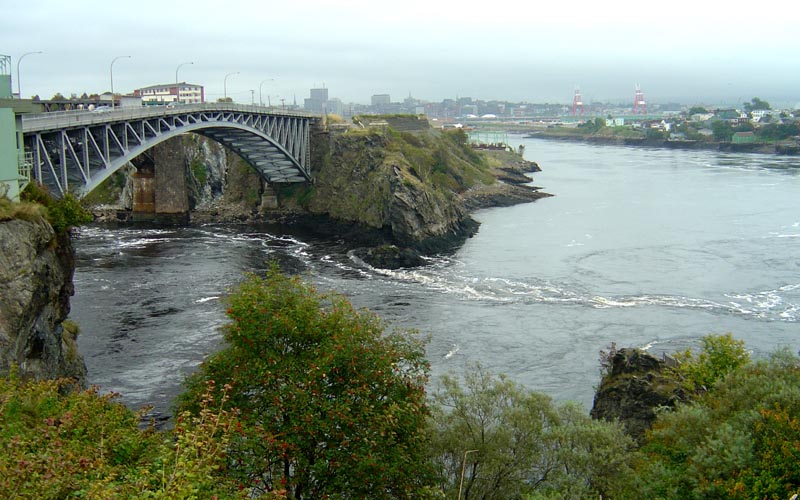come visit the 'bay of fundy' and
...THE REVERSING FALLS...
"The Reversing Falls is a unique phenomenon caused by the tremendous tide in the Bay of Fundy - the highest tides in the world. The bay's tidal action is affected by the funnel shape of the bay and by the moon's phases.
At low tide, the St. John River, which runs for 450 miles through the Province of New Brunswick, empties into the bay through a narrow rocky gorge. Near Fallsview Park, an underwater ledge, 36' below, causes a boiling series of rapids and whirlpools. The rising tide slows the river current to a stop and for 20 minutes a rest period called low slack tide allows boats to navigate the Falls. Once the tide is higher than the river, the reversal of the current occurs and continues until high tide. The water rises up to 14 1/2 feet above sea level in the gorge.
Then the tide slowly descends but still flows inland until it is at river level again (high slack). After 20 minutes rest, the river resumes its natural flow and the tide drops away to low tide revealing the rapids and whirlpools again.
It is recommended to view the Falls twice - near low tide and near high tide. A film presentation of the Reversing Falls can be viewed in the Rooftop Theatre at the Falls Restaurant for a small fee.
View this wonder from two vantage points - Fallsview Park and the Falls Restaurant observation deck. "
